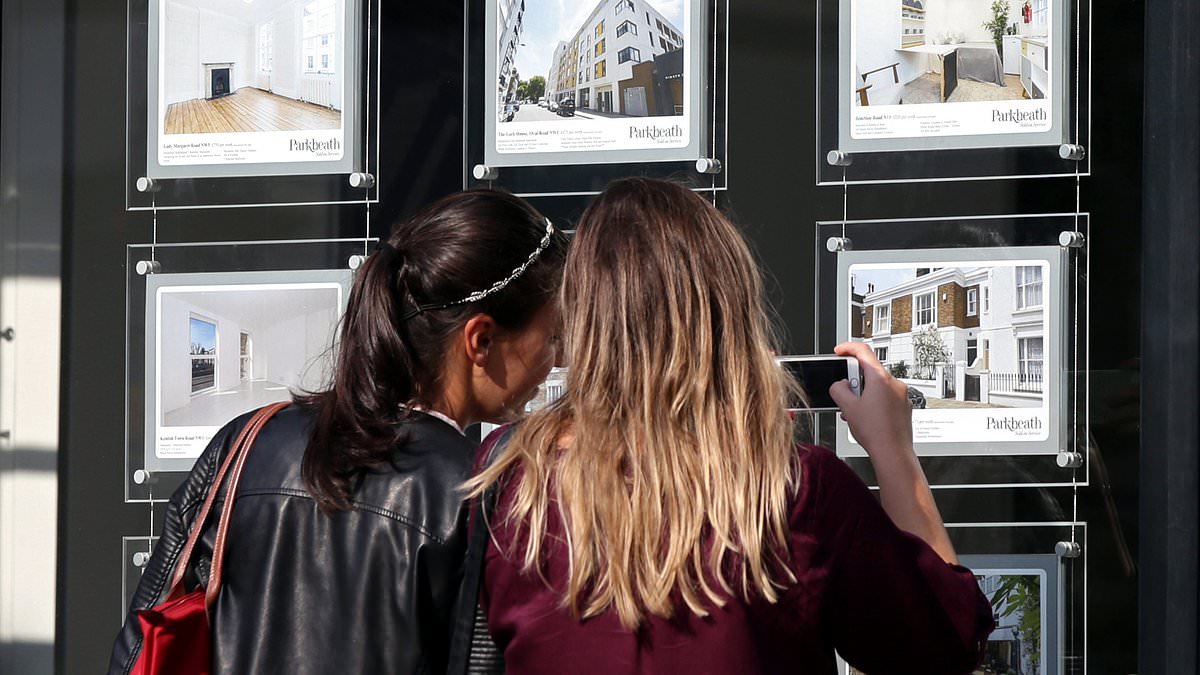By Editor,Lucy Evans
Copyright dailymail

Britain’s ‘outdated’ home buying and selling process is costing home movers £560million every year due to failed transactions, a leading high street bank today reveals. Some 23 per cent have experienced a property chain fail which is putting them off moving and is stifling the housing market.
The extent of the broken system across the country is today laid bare in a damning report from Santander and consultancy WPI Economics. The home buying process is antiquated and ripe for reform, the bank claims, due to the complexity of the process. It found more than 530,000 housing transactions across England and Wales fall through every year which is hitting buyer confidence – and denting the economy and consumer to the tune of £1.5billion each year.
Around 85 per cent of people who have had transactions fall through have lost money, Santander says, as costs such as mortgage broker and solicitor fees cannot be recouped if a deal falls through. While the average cost to home movers is £1,240 per failed transaction, one in five people reported losses in excess of some £2,000. But failed transactions and the complexity of the buying process is so stressful that buyers are less likely to move, which is puncturing a near £1billion size hole in the economy.
The home selling and buying process is disproportionately slow and stressful, Santander says. There are hurdles which are hard for home movers throughout the entire process with the biggest being the length of the process took too long, which the bank found was a crucial reason why transactions fall through. Some 47 per cent of movers say finding the right property as difficult while 38 per cent ran into difficulty in the conveyancing and legal process. The seller accepting a higher offer from another buyer is the main reason property transactions fell through. Some 25.5 per cent fell through this way, a process known as gazumping. This is where a rival buyer swoops in to make a higher offer on the house, even if your offer has been accepted.
Lengthy transactions caused 19.3 per cent to fail as buyers had to find another property. The time it takes to buy a sell a property is far beyond a homeowner’s expectations Santander found that half thought the purchase process would take under three months but this was only true for 41 per cent of people. Just 9 per cent thought it would take more than six months but in practice 17 per cent found they were in the process for more than half a year. Aside from the time taken, survey problems cause 16.3 per cent of sales to fall through while 15.7 per cent were because the seller withdrew for no reason at all.
David Morris, head of homes at Santander, says: ‘The homebuying journey is still operating in the confines of a framework that was established a century ago. This antiquated system is an increasingly heavy anchor weighing on the economy and fixing it must be key. While the Government has put the housing market firmly on its agenda – as this research shows – the scale of the challenge remains largely underappreciated, and that’s why we’re calling for powerful reforms to give buyers and sellers more confidence, ease the financial and emotional strain and create a housing system fit for the needs of today’s consumers and economy.’
It’s not just financial loss. The complex home buying and selling process – and their failure – is seeping into buyers’ wellbeing. The difficulty of the transaction process means 46 per cent of homebuyers feel positive about it while 54 per cent were constantly or frequently stressed throughout the transaction. Among those who experienced a failed property purchase or sale, 64 per cent had higher stress levels than normal with 57 per cent reporting increased anxiety 49 per cent facing sleep disruption and 26 per cent experiencing strained relationships.
Mr Morris says: ‘Buying a home should be a moment of excitement and hope, but for too many people, it’s an uncertain and exhausting process, that drains their mental, emotional and physical health.’ And this strain on mental wellbeing is putting off homeowners from moving again. Some 28 per cent of people say they are less likely to move again following the stress of their buying experience. However, if the process was more ‘streamlined’ it will incentivise 88 per cent of people who have moved recently to move again in the future.
The more than half a million failed transactions each year are causing a £950million hit to the wider economy as it punctures the country’s productivity. Swathes of buyers are taking time out of work to take calls and compete paperwork for the sale which ultimately proves fruitless when the sale falls through. This is denting the economy by £380million each year. Plus, the onslaught of stress and poor mental wellbeing caused by failed sales and purchases is causing home movers to miss work or have a loss of productivity while at work, which is hitting the economy by £400million. The loss of leisure time is swiping £170million from the economy each year. Santander say these figures are conservative calculations, too. And that’s without calculating the hit to the property market as homes are ‘misallocated’ and housing chains slow.
Santander has suggested a slew of policies to fix the broken home buying and selling process including disincentivising gazumping and gazundering, and making the process far more digital. Plus, there needs to be a Government owned centralised property data system to make the process smoother, Santander says. John Baguley, a mortgage policy expert at banking industry body UK Finance, echoes the call for digitisation to fix the broken process. He says: ‘The current homebuying process can be long, complex, and challenging, with many points of failure which lead to aborted transactions. The cost, time, and effort of all involved is significant. Lots of key data about individual properties exists but little of it is joined up and even less is digitised.’
‘This means the average consumer can be making a decision to buy the home of their dreams, based on half the picture. The current home buying and selling process is loaded towards obtaining crucial property information once the decision to buy has been taken, and an offer accepted. The buyer may not have made an offer had all the relevant information been available at the start of the homebuying journey.’ Meanwhile, Kate Davies, of the Intermediary Mortgage Lenders Association, says: ‘From a lender’s perspective, the most frustrating element of today’s homebuying process is that so many failures occur after applicants have already been fully assessed and approved for their mortgage. ‘We see cases where buyers are perfectly creditworthy, the funding is in place, but the transaction collapses because of avoidable problems further down the chain. That is wasted time, money and emotional energy for consumers, and wasted resource for lenders and brokers.



